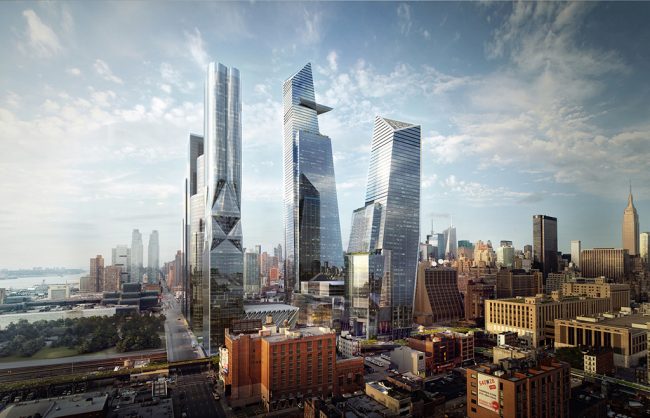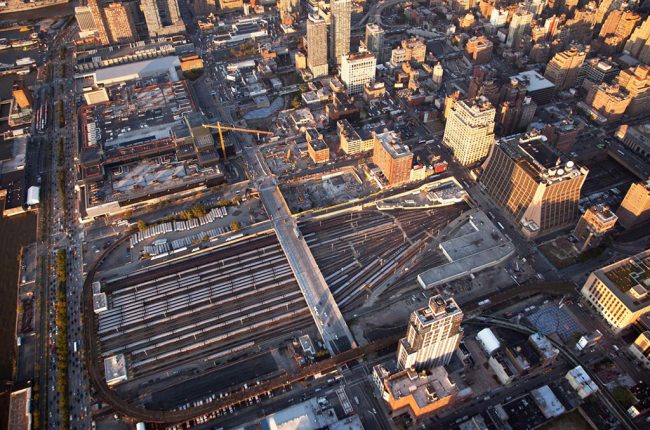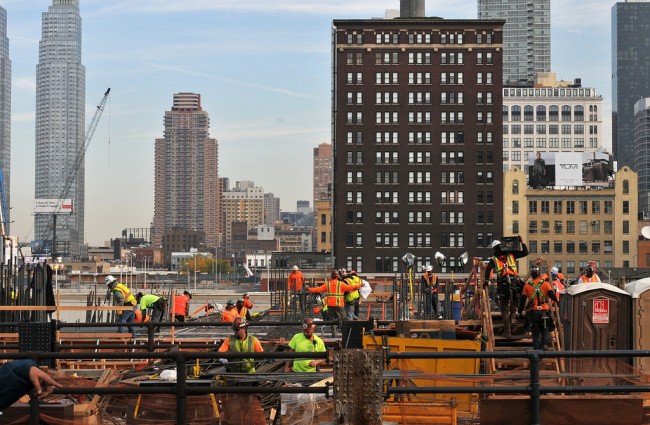
We are celebrating 15 years — and counting — of stories that are deeply researched and deeply felt, that build a historical record of what the city has been.
We are celebrating 15 years — and counting — of stories that are deeply researched and deeply felt, that build a historical record of what the city has been.
What is said to be the largest private real estate development in US history is set to become the country’s first “quantified community” as well. Hudson Yards, a 17 million-square foot Related Companies and Oxford Properties development on the far west side of Manhattan, will be embedded with technology to monitor environmental conditions, energy production and usage, and traffic flows among its soon to rise towers. The developers are partnering with New York University’s Center for Urban Science and Progress (CUSP), a public-private initiative born from the NYC Economic Development Corporation’s plan to establish applied sciences and engineering campuses in the city. CUSP may be less than a year old, but it counts a host of major technology and engineering companies as its industry partners. With support from and collaborations with the likes of IBM, Microsoft, Cisco, Siemens, AECOM, and Arup, one can assume it will have access to the newest embeddable sensors and data management systems as it seeks to apply its approach to urban informatics in shaping the management of a brand new neighborhood. Which of these partners’ products is used at Hudson Yards will be an interesting detail to keep an eye on.
The Hudson Yards/CUSP partnership is exactly the kind of project the City, NYU, and industry partners had in mind when the center was launched: it will aim to collect, integrate, manage, and analyze all the data streams coming in from Hudson Yards to help improve its quality of life. This task is made more feasible given a couple of other centralized systems in the massive development: a pneumatic waste system (read more on Roosevelt Island’s here) will suck retail and residential waste, organics and recyclables included, into a waste hub, and the neighborhood will have its on cogeneration plant to serve residents (an infrastructural element that strongly benefited other communities during Sandy). Waste and power pumped through these systems will be much easier to track than the city’s systems at large, which in aggregate are far more unwieldy and diverse.
Embedding the built environment with sensors to monitor how people use it is the central idea behind the “smart cities” envisioned by many technologists, planners, and data-driven governments. Adam Greenfield, in his pamphlet “Against the smart city” (an excerpt of which was published on UO), speaks to some of the potential pitfalls of this vision. And Hudson Yards, as a development conceived from scratch and directed by a single, private developer, provides an interesting corollary to some of the canonical smart cities that Greenfield discusses. Will the embedded technologies prove obsolete given the rapid turnover in new technologies? Who will have access to the data — CUSP and the management company, or the residents and public as well? And, ultimately, who benefits from its collection?

A rendering of a completed phase 1 of Hudson Yards | Image via Hudson Yards
The data itself will likely prove fascinating: an inside look at the life of a community. And there are very clear ways it can be used to create a more efficient, less wasteful community: information on energy consumption can help decrease that intake, or to shift energy loads across different times of day to relieve stress on the overall system. New ways to encourage more sustainable waste management strategies are always welcome. Air quality checks can spur interventions to keep you breathing the good stuff. But how other data would actually improve the quality of life of residents — the stated goal of its collection — and not just provide fodder for research is less clear.
CUSP and the developers hope to collect information on the health and activity levels of occupants by offering an app that workers and residents can download on a mobile device. Think a FitBit that’s synced with your landlord’s computer and multiply that by some fraction of the 40,000 people that are expected to live or work in Hudson Yards once the development is completed in 2024. What’s the benefit to the people? While collection of this data would be anonymous, says CUSP, privacy concerns still abound. Waste and energy data will be linked back to units, and health and activity numbers to your smart phone. Even if these personal links are supposedly hidden and secure, given the recent news of the Heartbleed vulnerability and government surveillance, one would be naïve to not recognize some privacy risk in opting in. All of the intended tracking is a form of surveillance, either of the air or of foot traffic, and only the health and activity concept would be implemented with any individual’s consent. The rest you would opt into by virtue of just being in the neighborhood. What metrics and data points will actually be collected is still vague, as are their applications. As Jay Cross, president of Related Hudson Yards, told the Times, “I don’t know what the applications might be, but I do know that you can’t do it without the data.”
The timeframe for these embedded technologies to light up CUSP’s data streams is not yet clear, but construction work continues apace at the site, so much so that the 24-hour construction schedule has drawn the ire of local residents. In mid-March, the installation of the 37,000-ton platform over the 30 railroad tracks that give the new neighborhood its name began, requiring the drilling of more than 250 concrete footings into the bedrock below the rail yards. And the 7 line extension that will serve Hudson Yards is set to open in November. As we see this new district created over the next decade, we can also look on as data takes center stage in its management. This “quantified community” is an experiment worth following, with implications for how our urban spaces are evaluated, and therefore how the public — and decision-makers in both the public and private sectors — shape and experience them going forward.

Aerial view of Hudson Yards in 2010. A platform over the rail yards is currently being constructed. | Photo via Hudson Yards
The views expressed here are those of the authors only and do not reflect the position of The Architectural League of New York.
